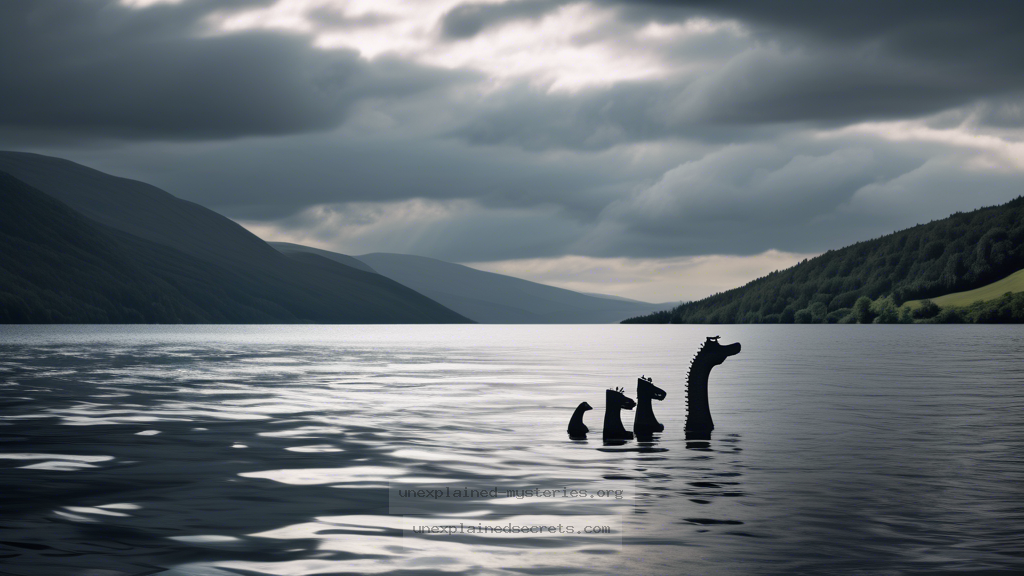What Secrets Lie Beneath the Surface of Loch Ness? A Look at Sonar Detections in the Search for the Loch Ness Monster
What Secrets Lie Beneath the Surface of Loch Ness? A Look at Sonar Detections in the Search for the Loch Ness Monster
The Loch Ness Monster, affectionately known as “Nessie,” has captivated the imaginations of many since the first recorded sighting in the 6th century. Despite centuries of speculation, the question remains: what exactly lies beneath the murky waters of Loch Ness? Among the various investigative efforts, sonar detections have emerged as a fascinating tool in the quest to uncover the truth behind this legendary creature. This exploration delves into the use of sonar technology in the search for Nessie, examining historical context, core theories, practical implications, and the ongoing debate surrounding the Loch Ness Monster.
Historical Context of Loch Ness and Its Mysteries
Loch Ness is a large, deep freshwater lake located in the Scottish Highlands, extending approximately 23 miles and reaching depths of over 750 feet. The earliest recorded sighting of a creature resembling Nessie dates back to St. Columba’s account in 565 AD, where he described a monster in the loch that attacked a follower. This account set the stage for centuries of folklore and fascination.
The modern era of Nessie sightings began in the 1930s, particularly after a famous photograph taken by surgeon Robert Kenneth Wilson in 1934, known as the “Surgeon’s Photo.” For decades, this image was considered one of the most compelling pieces of evidence for the existence of the Loch Ness Monster. However, it was eventually revealed to be a hoax. Despite the controversy, public interest surged, leading to numerous investigations, including the use of sonar technology.
Understanding Sonar Technology
Sonar, an acronym for Sound Navigation and Ranging, is a technology that uses sound waves to detect and locate objects underwater. There are two primary types of sonar: active and passive. Active sonar emits sound pulses and listens for their echoes, while passive sonar listens for sounds made by objects in the water. The application of sonar in the search for the Loch Ness Monster offers both intriguing possibilities and significant challenges.
Key Fact: Loch Ness is one of the largest bodies of freshwater in the UK, holding more water than all the lakes in England and Wales combined.
Notable Sonar Investigations and Findings
Over the years, several notable sonar expeditions have taken place in Loch Ness, each contributing to the ongoing quest for evidence of the monster. One of the most significant was the “Operation Deepscan” in 1987, a comprehensive survey conducted with multiple boats equipped with sonar technology. The expedition aimed to map the loch’s bottom and identify any large, unknown objects.
During Operation Deepscan, researchers detected several large, moving objects within the loch, which sparked excitement among cryptozoologists and enthusiasts alike. However, subsequent analysis revealed that many of these detections could be attributed to underwater currents, debris, or even schools of fish. The findings illustrated the complexity of interpreting sonar data in such a vast and deep body of water.
Core Theories: What Could Nessie Be?
Theories regarding the identity of the Loch Ness Monster vary widely, ranging from the plausible to the bizarre. Some believe Nessie could be a surviving species of prehistoric marine reptile, such as a plesiosaur, which has led to ongoing debates in the field of cryptozoology. Others propose that it may be a large sturgeon or catfish, species known to inhabit freshwater lakes.
Another theory suggests that the sightings of Nessie could be attributed to misidentified animals, such as otters or birds, creating optical illusions in the water. This theory aligns with the idea that human perception can be easily influenced by the environment and the psychological factors at play when encountering something unexplained.
Did You Know? Over 1,000 recorded sightings of the Loch Ness Monster exist, with the majority occurring in the 20th century.
Practical Implications of Sonar Research
The use of sonar technology in Loch Ness research has practical implications beyond the search for Nessie. Sonar can help scientists better understand the unique ecosystem of Loch Ness, including the distribution of fish populations, underwater topography, and sediment layers. Such data is crucial for environmental conservation efforts and maintaining the health of the loch.
Additionally, sonar technology has applications in commercial fishing, navigation safety, and underwater archaeology, highlighting the versatility of this technology. By expanding research beyond the myth of the Loch Ness Monster, sonar investigations contribute valuable insights into aquatic environments and their inhabitants.
Alternative Perspectives: Skepticism and Belief
The debate surrounding the Loch Ness Monster often divides people into two camps: believers and skeptics. Believers argue that the sheer number of sightings and the cultural significance of Nessie warrant continued exploration. Skeptics, on the other hand, often cite the lack of concrete evidence and the tendency for sightings to coincide with hoaxes or misinterpretations.
Prominent skeptics like Dr. Neil Gemmell, a geneticist who led a team to collect water samples from Loch Ness in 2018, have argued that the absence of DNA evidence supports the notion that no large creature exists in the loch. His team’s findings revealed a rich diversity of life but did not uncover any trace of a large, unidentified species. This perspective challenges the romanticized view of Nessie as a mysterious creature lurking in the depths.
Notable Quote: “The Loch Ness Monster is a product of our imagination, fueled by folklore and the desire for the extraordinary.” – Dr. Neil Gemmell
Common Misconceptions and Clarifications
Many misconceptions surrounding the Loch Ness Monster can hinder a logical understanding of the mystery. One such misconception is that sonar can definitively identify all creatures in the water. In reality, sonar technology has limitations, particularly in deep and murky waters where visibility is low. It can detect large objects but may struggle to provide clear distinctions between species or even differentiate between debris and living creatures.
Another misconception is that all reported sightings of Nessie are credible. In truth, many sightings have been proven to be hoaxes or misinterpretations of ordinary objects, like floating logs or waves. This highlights the importance of skepticism and critical thinking when approaching the topic of cryptozoology.
Best Practices for Investigating Loch Ness
For those interested in investigating the Loch Ness Monster, several best practices can enhance the research experience. First and foremost, it is essential to approach the topic with an open mind while maintaining a healthy skepticism. Consider both scientific evidence and anecdotal accounts. Engaging with local historians and experts can provide valuable context and depth to the investigation.
Utilizing modern technology, such as drones equipped with cameras and sonar, can offer new perspectives on Loch Ness. Collaborating with scientists and researchers from various disciplines can also foster a multidisciplinary approach to understanding the mysteries of the loch.
Tip: Always document your findings and observations, whether they align with the legend or not. Each piece of evidence contributes to the broader narrative.
Future Developments and Ongoing Research
The search for the Loch Ness Monster remains ongoing, with new technologies and methodologies emerging. Recent advancements in environmental DNA (eDNA) analysis have opened new avenues for investigation, allowing researchers to analyze genetic material in water samples to identify species present in the loch.
As technology continues to evolve, the potential for uncovering new evidence grows. Future expeditions may incorporate more sophisticated sonar systems, AI-driven analysis, and collaborative efforts with marine biologists, ecologists, and cryptozoologists, pushing the boundaries of our understanding of Loch Ness.
Conclusion: The Enduring Mystery of Loch Ness
The Loch Ness Monster remains one of the most enduring mysteries of our time. Sonar technology has played a crucial role in the quest to uncover the truth behind Nessie, providing both opportunities for discovery and challenges in interpretation. While skeptics continue to question the existence of such a creature, the allure of Loch Ness captivates enthusiasts, researchers, and tourists alike.
As investigations evolve, the potential for new discoveries keeps the legend alive, reminding us of the intersection between myth and reality. Whether Nessie is a figment of our collective imagination or a hidden creature waiting to be discovered, the mystery of Loch Ness continues to inspire curiosity and exploration.
Other Articles
What Compelling Evidence Exists for the Existence of Bigfoot?
Recent Posts
- What Happened to Flight MH370? The Conspiracy Theories That Still Haunt Us
- What Secrets Lurk Within the Walls of the Infamous Trans-Allegheny Lunatic Asylum?
- What Evidence Supports the Existence of Bigfoot in the Pacific Northwest?
- What Happened to the Indus Valley Civilization? Unraveling the Mysteries of Ancient Urban Life
- Can Telepathy Be Scientifically Proven Through Laboratory Evidence?







